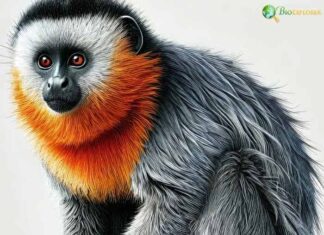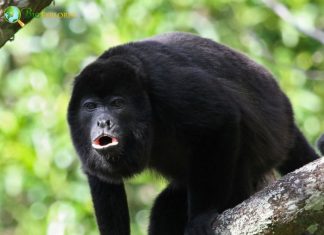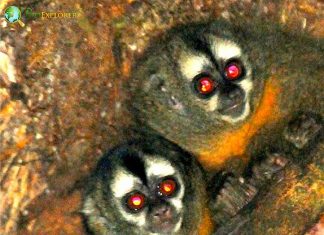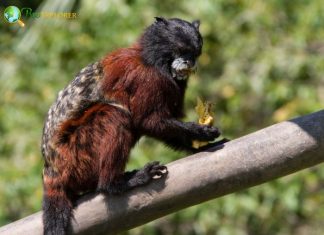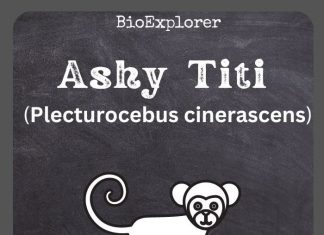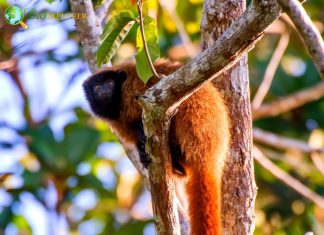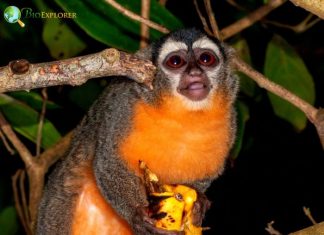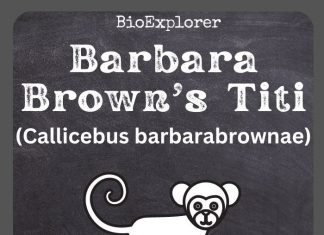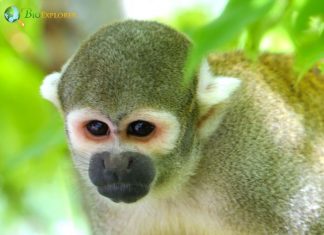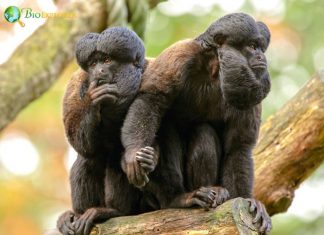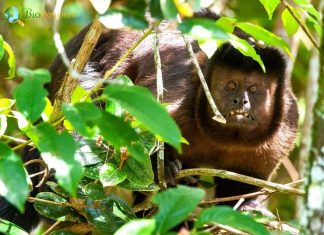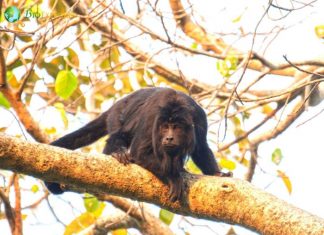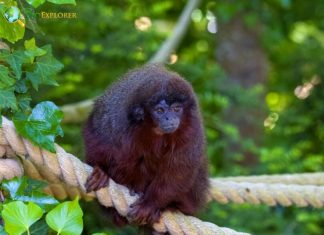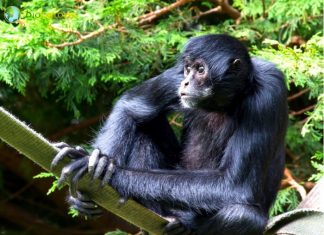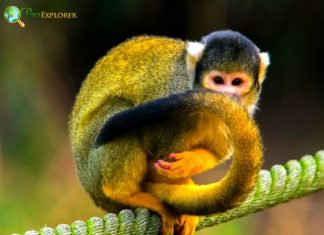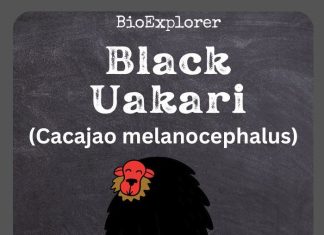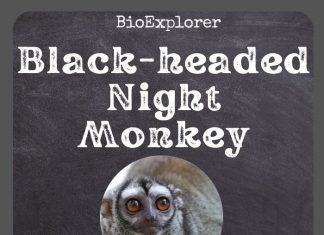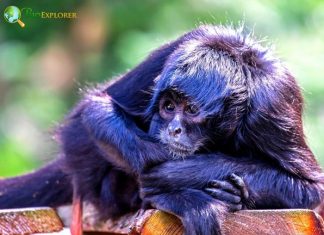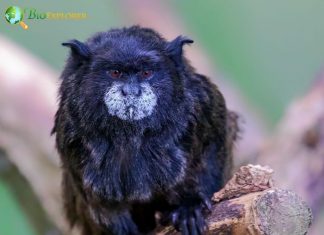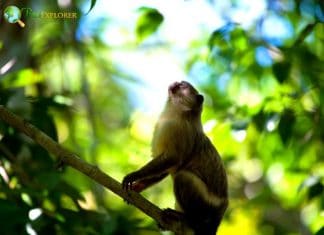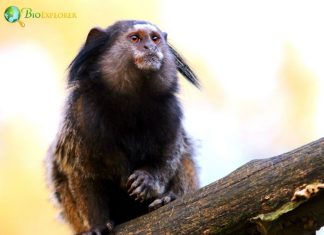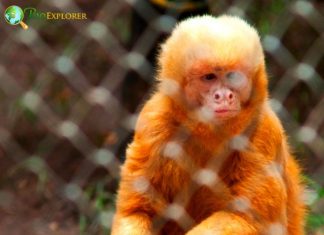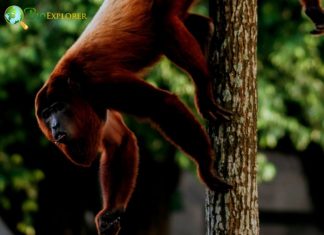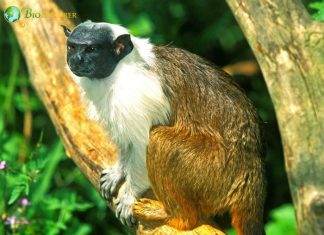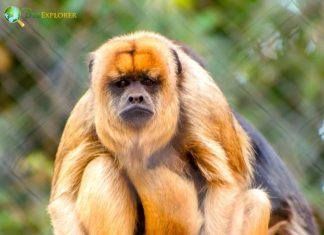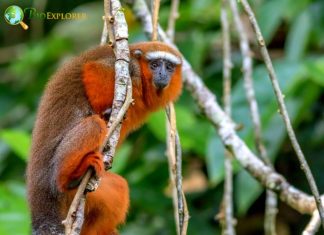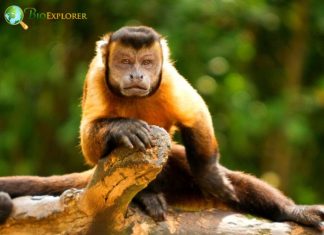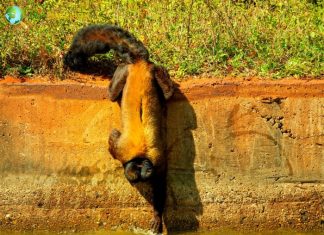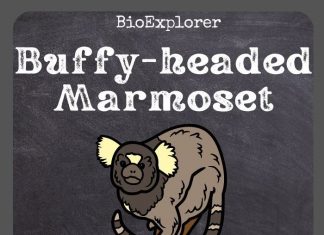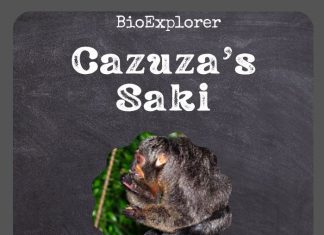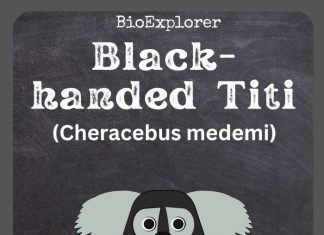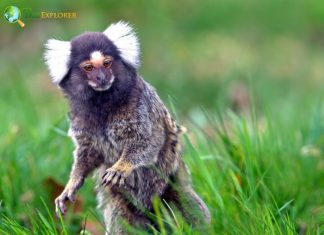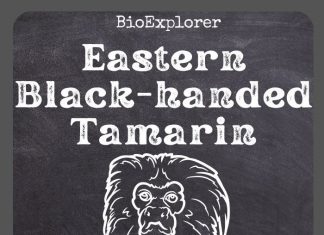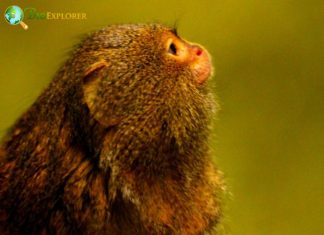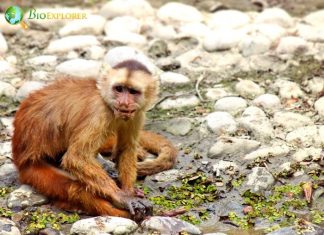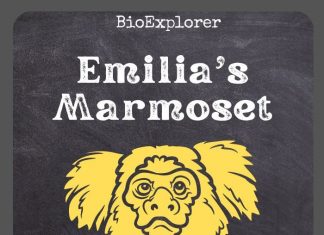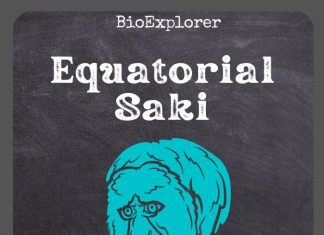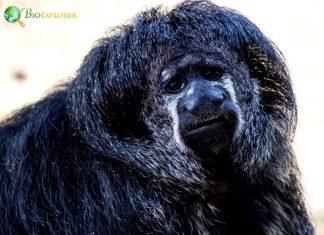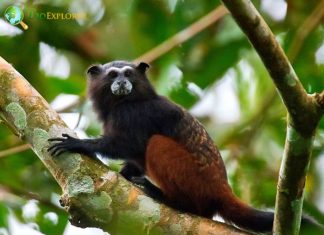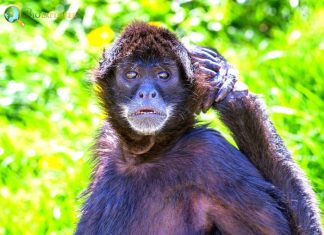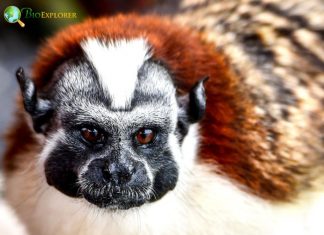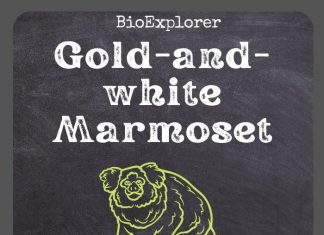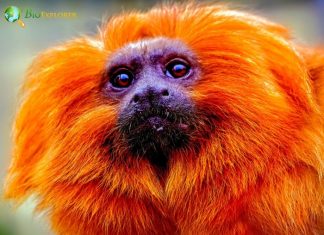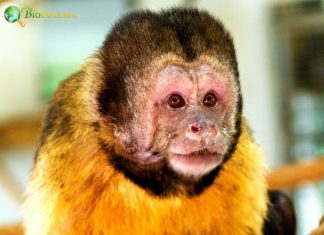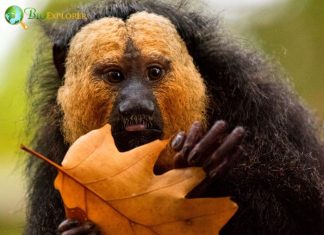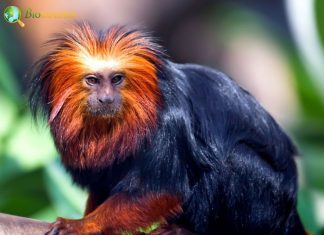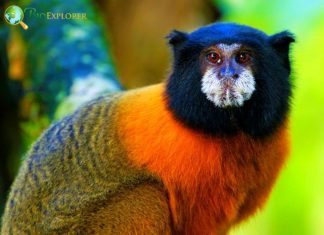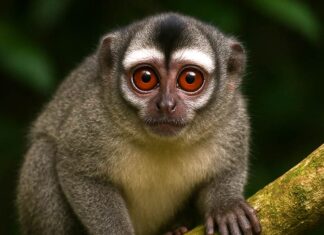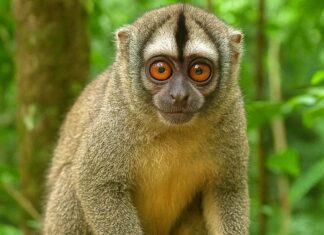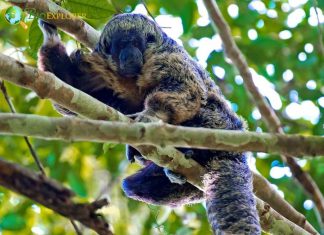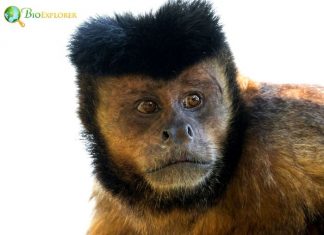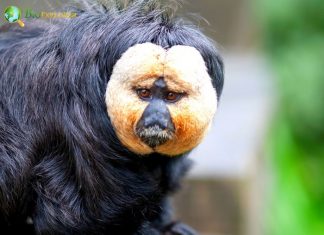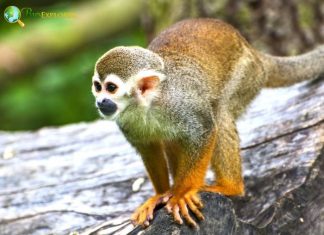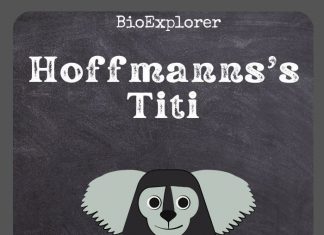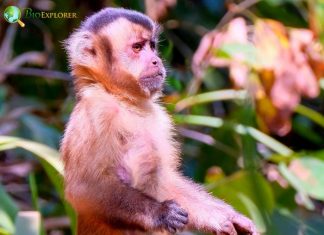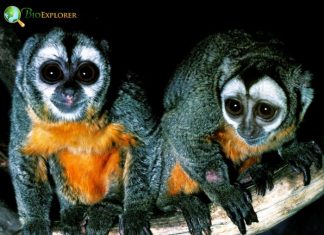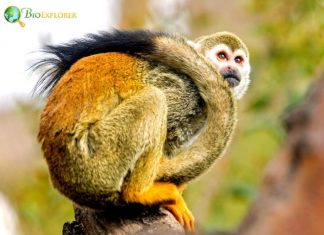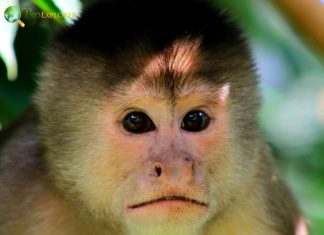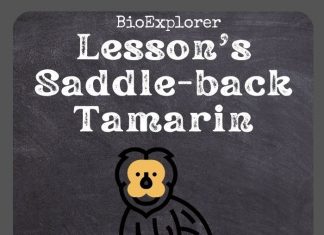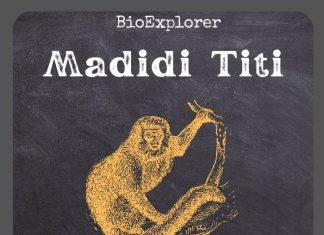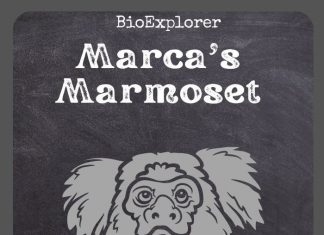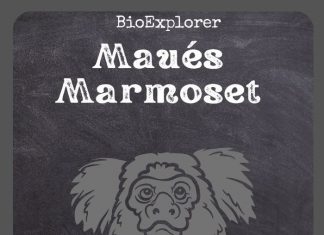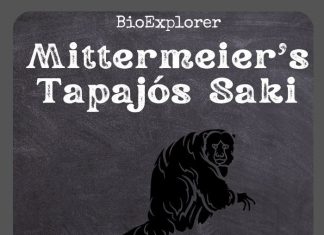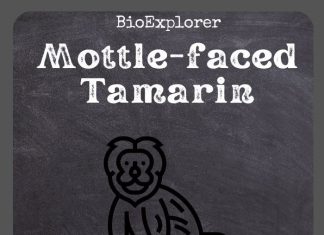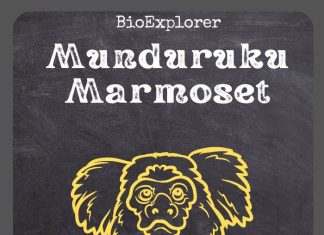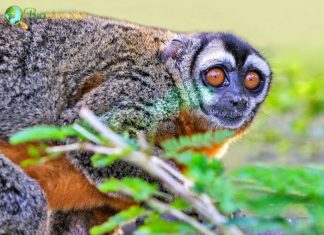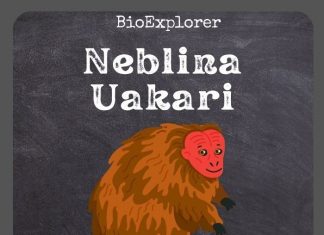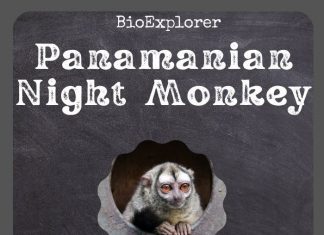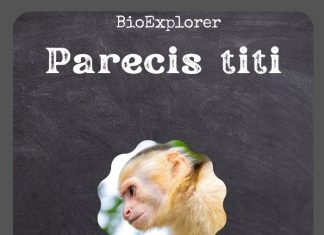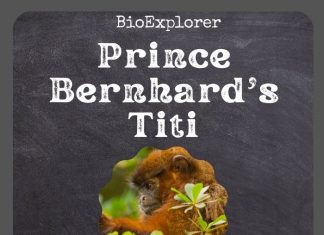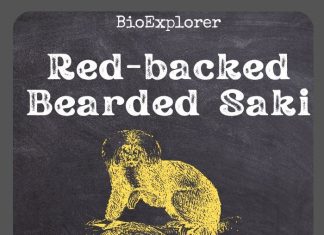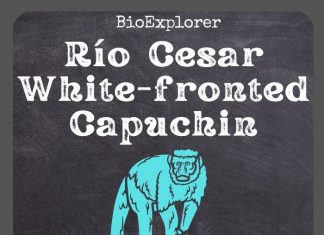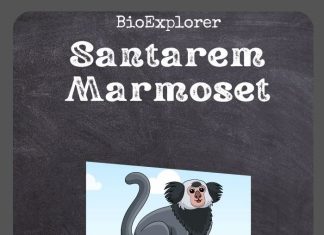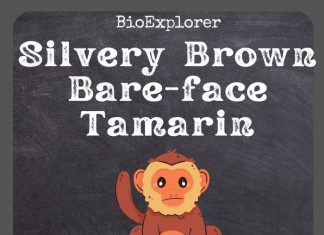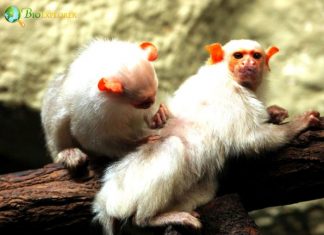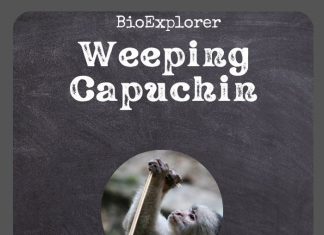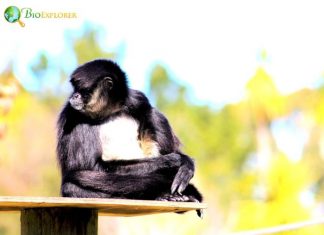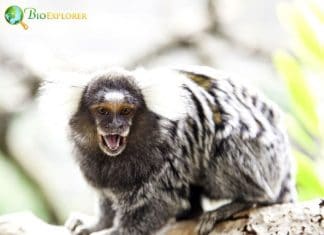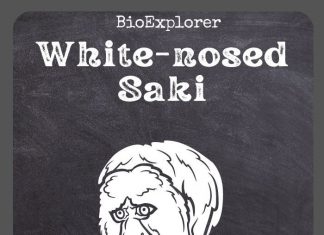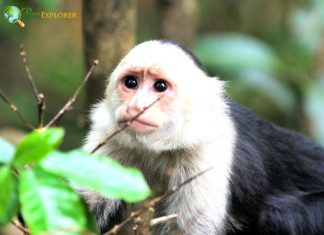
The term “New World monkey” is a broad label that refers to any species that falls under one of the five taxonomic families of the Ceboidea superfamily: Cebidae, Callitrichidae, Atelidae, Pitheciidae, and Aotidae.
There are 23 genera and 179 species of New World monkeys distributed across southern Mexico and South and Central America.
Many different types of New World monkeys exist, including howler monkeys, marmosets, capuchins, sakis, night monkeys, tamarins, and more.
Characteristics of New-World Monkeys
Here are the main characteristics shared by New World monkeys:

Diet
The diet of New World monkeys cannot simply be generalized—it largely depends on the particular species in question. Nevertheless, some of the common foods eaten by these monkeys are fruits, insects, tree gums, and seeds; many species are primarily frugivores or insectivores[1].

Gestation/Reproduction
For the most part, smaller New World monkeys tend to stick to monogamy, while larger species are more likely to be polyamorous[2]. Interestingly, unlike many other primate groups, female New World monkeys do not have periods. It should also be noted that although the gestation period of New World monkeys varies by species, it is usually around 145 days (about 5 months).

Tail
All New World monkeys possess tails; in certain species, they are prehensile, meaning they can be used to grasp and hold objects, acting like a fifth limb of sorts[5].
One of the most well-known uses in monkeys is to dangle from a tree branch (by tightly wrapping the prehensile tail around it). It should be noted that only 4 genera of New World monkeys have these useful appendages: Ateles (spider monkeys), Lagothrix (woolly monkeys), Brachyteles (woolly spider monkeys), and Cebus (capuchin monkeys)[6].
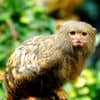
Body Size
In general, New World monkeys are mainly small to medium-sized. Specifically, the smallest New World monkey species in the world is the pygmy marmoset (Finger Monkey) (Cebuella pygmaea); it weighs around 3 to 5 ounces and can be 4 to 6 inches long[7].
On the other hand, one of the largest New World monkey species is the Yucatan black howler monkey (Alouatta pigra), which can weigh up to 11.4 kilograms, and is about 26 inches long[8].

Teeth
All New World Monkeys share a dental formula of 2.1.3.3[9]. This essentially means that each quadrant of the mouth has 2 incisors (which are used to bite food directly) and 1 canine (which is used to tear food), as well as 3 molars and premolars each (both of which are used to chew food).

Social Behavior
The social groups and structures of New World monkeys vary between species. For instance, some genera live in small groups consisting of only close family (mates and children). Conversely, other genera live in large groups made up of many different families; these groups can be made up of as many as 50 to 60 individuals [10].

Eyes
New-World monkeys are known for their large eyes; however, the quality of their color vision varies between species. For example, in some species, all males possess dichromatic vision (meaning they only have two cone cells in their retinas that perceive color), while females’ vision can either be trichromatic (which means they have three cone types in their retinas), or dichromatic like males[11].
On the other hand, all species of howler monkeys, male and female, have been found to have a trichromatic vision[12].
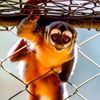
Limbs
All New-World monkeys possess relatively long limbs and have a locomotor pattern of quadrupedal walking[3]. It is also worth mentioning that the thumbs of New World monkeys, unlike Old World monkeys, are not opposable (meaning they cannot move independently from the hand)[4].
Types of New-World Monkeys
Alta Floresta Titi
Species Name: Plecturocebus grovesiAmazon Black Howler
Species Name: Alouatta nigerrimaAndean Night Monkey
Species Name: Aotus miconaxAndean Saddle-back Tamarin
Species Name: Leontocebus leucogenysAracá Uakari
Species Name: Cacajao ayresiAshy Black Titi
Species Name: Plecturocebus cinerascensAtlantic Titi
Species Name: Callicebus personatusAzara’s Night Monkey
Species Name: Aotus azaraeBald Uakari
Species Name: Cacajao calvusBarbara Brown’s Titi
Species Name: Callicebus barbarabrownaeBare-eared Squirrel Monkey
Species Name: Saimiri ustusBearded Capuchin
Species Name: Sapajus libidinosusBearded Saki
Species Name: Chiropotes chiropotesBlack Bearded Saki
Species Name: Chiropotes satanasBlack Capuchin
Species Name: Sapajus nigritusBlack Howler monkey
Species Name: Alouatta carayaBlack Lion Tamarin
Species Name: Leontopithecus chrysopygusBlack Spider Monkey
Species Name: Ateles paniscusBlack Squirrel Monkey
Species Name: Saimiri vanzoliniiBlack Tamarin
Species Name: Saguinus nigerBlack Titi
Species Name: Cheracebus lugensBlack Uakari
Species Name: Cacajao melanocephalusBlack-capped Squirrel Monkey
Species Name: Saimiri boliviensisBlack-faced Lion Tamarin
Species Name: Leontopithecus caissaraBlack-fronted Titi
Species Name: Callicebus nigrifronsBlack-headed Marmoset
Species Name: Mico nigricepsBlack-headed Night Monkey
Species Name: Aotus nigricepsBlack-Headed Spider Monkey
Species Name: Ateles fuscicepsBlack-mantled Tamarin
Species Name: Leontocebus nigricollisBlack-Tailed Marmoset
Species Name: Mico melanurusBlack-Tufted Marmoset
Species Name: Callithrix penicillataBlond Capuchin
Species Name: Sapajus flaviusBolivian Red Howler
Species Name: Alouatta saraBrazilian Bare-Faced Tamarin
Species Name: Saguinus bicolorBrown Howler Monkey
Species Name: Alouatta guaribaBrown Titi
Species Name: Plecturocebus brunneusBrown Weeper Capuchin
Species Name: Cebus brunneusBrown-backed Bearded Saki
Species Name: Chiropotes israelitaBrown-mantled Tamarin
Species Name: Leontocebus fuscicollisBrumback’s Night Monkey
Species Name: Aotus brumbackiBuffy-headed Marmoset
Species Name: Callithrix flavicepsBuffy-tufted Marmoset
Species Name: Callithrix auritaBurnished Saki
Species Name: Pithecia inustaCaquetá Titi
Species Name: Plecturocebus caquetensisCazuza’s Saki
Species Name: Pithecia cazuzaiCentral American Squirrel Monkey
Species Name: Saimiri oerstediiChacoan Titi Monkey
Species Name: Plecturocebus pallescensChestnut-bellied Titi
Species Name: Plecturocebus caligatusCoastal Black-handed Titi
Species Name: Callicebus melanochirCoimbra Filho’s Titi
Species Name: Callicebus coimbraiCollared Titi
Species Name: Cheracebus torquatusCollins’ Squirrel Monkey
Species Name: Saimiri collinsiColombian Black-handed Titi
Species Name: Cheracebus medemiCommon Marmoset
Species Name: Callithrix jacchusCoppery Titi
Species Name: Plecturocebus cupreusCotton-Top Tamarin
Species Name: Saguinus oedipusCruz Lima’s Saddleback Tamarin
Species Name: Leontocebus cruzlimaiEastern Black-handed Tamarin
Species Name: Saguinus ursulaEastern Pygmy Marmoset
Species Name: Cebuella niveiventrisEcuadorian Capuchin
Species Name: Cebus aequatorialisEcuadorian Squirrel Monkey
Species Name: Saimiri macrodonEmilia’s Marmoset
Species Name: Mico emiliaeEmperor Tamarin
Species Name: Saguinus imperatorEquatorial Saki
Species Name: Pithecia aequatorialisGeoffroy’s Monk Saki
Species Name: Pithecia monachusGeoffroy’s Saddleback Tamarin
Species Name: Leontocebus nigrifronsGeoffroy’s Spider Monkey
Species Name: Ateles geoffroyiGeoffroy’s Tamarin
Species Name: Saguinus geoffroyiGoeldi’s Marmoset
Species Name: Callimico goeldiiGold-And-White Marmoset
Species Name: Mico chrysoleucosGolden Lion Tamarin
Species Name: Leontopithecus rosaliaGolden-Bellied Capuchin
Species Name: Sapajus xanthosternosGolden-faced Saki
Species Name: Pithecia chrysocephalaGolden-Headed Lion Tamarin
Species Name: Leontopithecus chrysomelasGolden-mantled Tamarin
Species Name: Leontocebus tripartitusGray-bellied Night Monkey
Species Name: Aotus lemurinusGray-handed Night Monkey
Species Name: Aotus griseimembraGray’s Bald-faced Saki
Species Name: Pithecia irrorataGuianan Brown Capuchin
Species Name: Sapajus apellaGuianan Saki
Species Name: Pithecia pitheciaGuianan Squirrel Monkey
Species Name: Saimiri sciureusGuianan Weeper Capuchin
Species Name: Cebus olivaceusGuyanan Red Howler Monkey
Species Name: Alouatta macconnelliHairy Saki
Species Name: Pithecia hirsutaHershkovitz’s Marmoset
Species Name: Mico intermediusHoffmann’s Titi
Species Name: Plecturocebus hoffmannsiHooded Capuchin
Species Name: Sapajus cayHumboldt’s Night Monkey
Species Name: Aotus trivirgatusHumboldt’s Squirrel Monkey
Species Name: Saimiri cassiquiarensisHumboldt’s White Capuchin
Species Name: Cebus albifronsHumboldt’s Woolly Monkey
Species Name: Lagothrix lagothrichaIlliger’s Saddle-Back Tamarin
Species Name: Leontocebus illigeriIsabel’s Saki
Species Name: Pithecia isabelaKaapori Capuchin
Species Name: Cebus kaaporiLake Baptista Titi
Species Name: Plecturocebus baptistaLesson’s Saddle-Back Tamarin
Species Name: Leontocebus fuscusLucifer Titi
Species Name: Cheracebus luciferMadidi Titi
Species Name: Plecturocebus aureipalatiiMantled Howler Monkey
Species Name: Alouatta palliataMaranhão Red-Handed Howler
Species Name: Alouatta ululataMarca’s Marmoset
Species Name: Mico marcaiMartins’ Tamarin
Species Name: Saguinus martinsiMaués Marmoset
Species Name: Mico mauesiMidas Tamarin
Species Name: Saguinus midasMiller’s Saki
Species Name: Pithecia milleriMilton’s Titi
Species Name: Plecturocebus miltoniMittermeier’s Tapajós Saki
Species Name: Pithecia mittermeieriMottle-faced Tamarin
Species Name: Saguinus inustusMoustached Tamarin
Species Name: Saguinus mystaxMunduruku Marmoset
Species Name: Mico mundurukuNancy Ma’s Night Monkey
Species Name: Aotus nancymaaeNeblina Uakari
Species Name: Cacajao hosomiNorthern Muriqui
Species Name: Brachyteles hypoxanthusOllala Brothers’ Titi
Species Name: Plecturocebus olallaeOrnate Titi
Species Name: Plecturocebus ornatusPanamanian Night Monkey
Species Name: Aotus zonalisPanamanian White-faced Capuchin
Species Name: Cebus imitatorParecis Titi
Species Name: Plecturocebus parecisPeruvian Spider Monkey
Species Name: Ateles chamekPeruvian White-fronted Capuchin
Species Name: Cebus yuracusPeruvian Yellow-tailed Woolly Monkey
Species Name: Lagothrix flavicaudaPissinatti’s Bald-faced Saki
Species Name: Pithecia pissinattiiPrince Bernhard’s Titi
Species Name: Plecturocebus bernhardiPygmy Marmoset (Finger Monkey)
Species Name: Cebuella pygmaeaRed Howler Monkey
Species Name: Alouatta seniculusRed-backed Bearded Saki
Species Name: Chiropotes sagulatusRed-bellied Titi
Species Name: Plecturocebus molochRed-Chested Mustached Tamarin
Species Name: Saguinus labiatusRed-handed Howler
Species Name: Alouatta belzebulRed-headed Titi
Species Name: Cheracebus regulusRed-mantled Saddle-Back Tamarin
Species Name: Leontocebus lagonotusRio Acari Marmoset
Species Name: Mico acariensisRio Beni Titi
Species Name: Plecturocebus modestusRío Cesar White-fronted Capuchin
Species Name: Cebus cesaraeRio Mayo Titi
Species Name: Plecturocebus oenantheRobust Capuchin Monkey
Species Name: Sapajus robustusRondon’s Marmoset
Species Name: Mico rondoniRoosmalens’ Dwarf Marmoset
Species Name: Mico humilisRyland’s Bald-faced Saki
Species Name: Pithecia rylandsiSanta Marta White-fronted Capuchin
Species Name: Cebus malitiosusSantarem Marmoset
Species Name: Mico humeraliferSatéré Marmoset
Species Name: Mico satereiSchneider’s Marmoset
Species Name: Mico schneideriShock-headed Capuchin
Species Name: Cebus cuscinusSierra De Perijá White-fronted Capuchin
Species Name: Cebus leucocephalusSilvery Brown Bare-face Tamarin
Species Name: Saguinus leucopusSilvery Marmoset
Species Name: Mico argentatusSouthern Muriqui
Species Name: Brachyteles arachnoidesSpix’s Night Monkey
Species Name: Aotus vociferansSpix’s Red-handed Howler
Species Name: Alouatta discolorSpix’s White-fronted Capuchin
Species Name: Cebus unicolorStephen Nash’s Titi
Species Name: Plecturocebus stephennashiToppin’s Titi
Species Name: Plecturocebus toppiniUrsine Howler
Species Name: Alouatta arctoideaUrubamba Brown Titi
Species Name: Plecturocebus urubambensisUta Hick’s Bearded Saki
Species Name: Chiropotes utahickiVanzolini’s Bald-faced Saki
Species Name: Pithecia vanzoliniiVaried White-fronted Capuchin
Species Name: Cebus versicolorVariegated Spider Monkey
Species Name: Ateles hybridusVieira’s Titi
Species Name: Plecturocebus vieiraiWeddell’s Saddle-Back Tamarin
Species Name: Leontocebus weddelliWeeping Capuchin
Species Name: Cebus castaneusWhite Marmoset
Species Name: Mico leucippeWhite-bellied Spider Monkey
Species Name: Ateles belzebuthWhite-cheeked Spider Monkey
Species Name: Ateles marginatusWhite-eared Titi
Species Name: Plecturocebus donacophilusWhite-footed Saki
Species Name: Pithecia albicansWhite-Headed Marmoset
Species Name: Callithrix geoffroyiWhite-nosed Saki
Species Name: Chiropotes albinasusWhite-tailed Titi
Species Name: Plecturocebus discolorWhite-Throated Capuchin
Species Name: Cebus capucinusWied’s Marmoset
Species Name: Callithrix kuhliiYucatan Black Howler
Species Name: Alouatta pigra![]()


